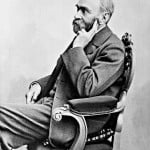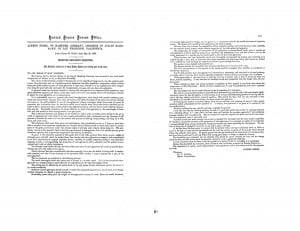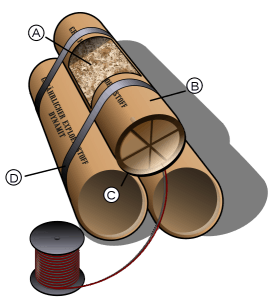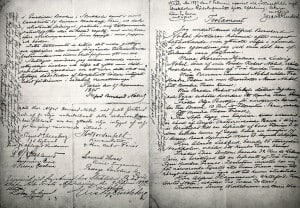
ALFRED NOBEL
October 21st is the birthday of the late Alfred Bernhard Nobel who lived from 1833 to 1896. He was a Swedish chemist, engineer, innovator and manufacturer.

In 1862, he started experimenting with nitroglycerin as an explosive material for oil mining. By the next year, at age 30, he obtained his first patent. A year later, he also developed and patented a detonator, or blasting cap, for triggering the explosive device. By age 40, Nobel had armament and explosives manufacturing companies around the world.

Ironically, in 1866, one of Nobel’s German manufacturing factories exploded. Resolved to improve the products’ safety, Nobel discovered that adding diatomaceous earth, a form of hardened algae as fine as powder, stabilizes the explosive material.
Although Nobel held over 350 different patents, his dynamite patent was his most notable invention. “Dynamite revolutionized the transportation industry by greatly facilitating the construction of roads and railways, tunnels and canals. It also played a crucial role in the modern mining industry.”¹

THE NOBEL PRIZE
Nobel’s wealth was derived from his manufacturing companies and from his investment in his two brothers’ oilfields along the Caspian Sea. Upon his death, Nobel left the majority of his wealth, $186 million, in a trust from which his fortune is posthumously awarded “to those who, during the preceding year, shall have conferred the greatest benefit on mankind.”²

In 1900, The Nobel Foundation was established as a private organization to administer the trust, and, in accordance with Nobel’s wishes, “The prizes for physics and chemistry shall be awarded by the Swedish Academy of Sciences; that for physiology or medical works by the Karolinska Institute in Stockholm; that for literature by the Academy in Stockholm, and that for champions of peace by a committee of five persons to be elected by the Norwegian Storting. It is my express wish that in awarding the prizes no consideration be given to the nationality of the candidates, but that the most worthy shall receive the prize, whether he be Scandinavian or not.”² Up to three people may receive the award in any given field. For example, Eric Betzig, Stefan W. Hell and William E. Moerner jointly received the 2014 Nobel Prize in Chemistry “for the development of super-resolved fluorescence microscopy.”³
REFERENCES

1. The Official Web Site of the Nobel Prize, http://www.nobelprize.org/alfred_nobel/biographical/articles/krummel/
2. The Official Web Site of Nobel Prize, http://www.nobelprize.org/alfred_nobel/will/
3. The Official Web Site of Nobel Prize, http://www.nobelprize.org/nobel_prizes/chemistry/laureates/2014/
4. Bown, Stephen R. A most damnable invention : dynamite, nitrates, and the making of the modern world. New York : T. Dunne Books, 2005. Engineering Library Q175.35 .B69 2005